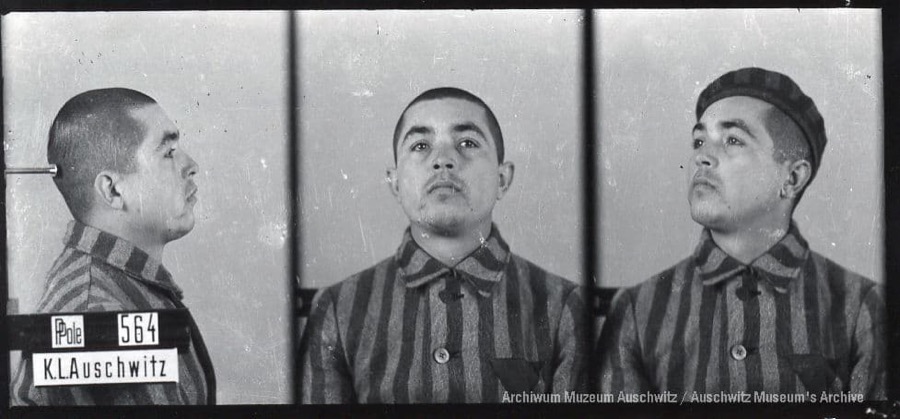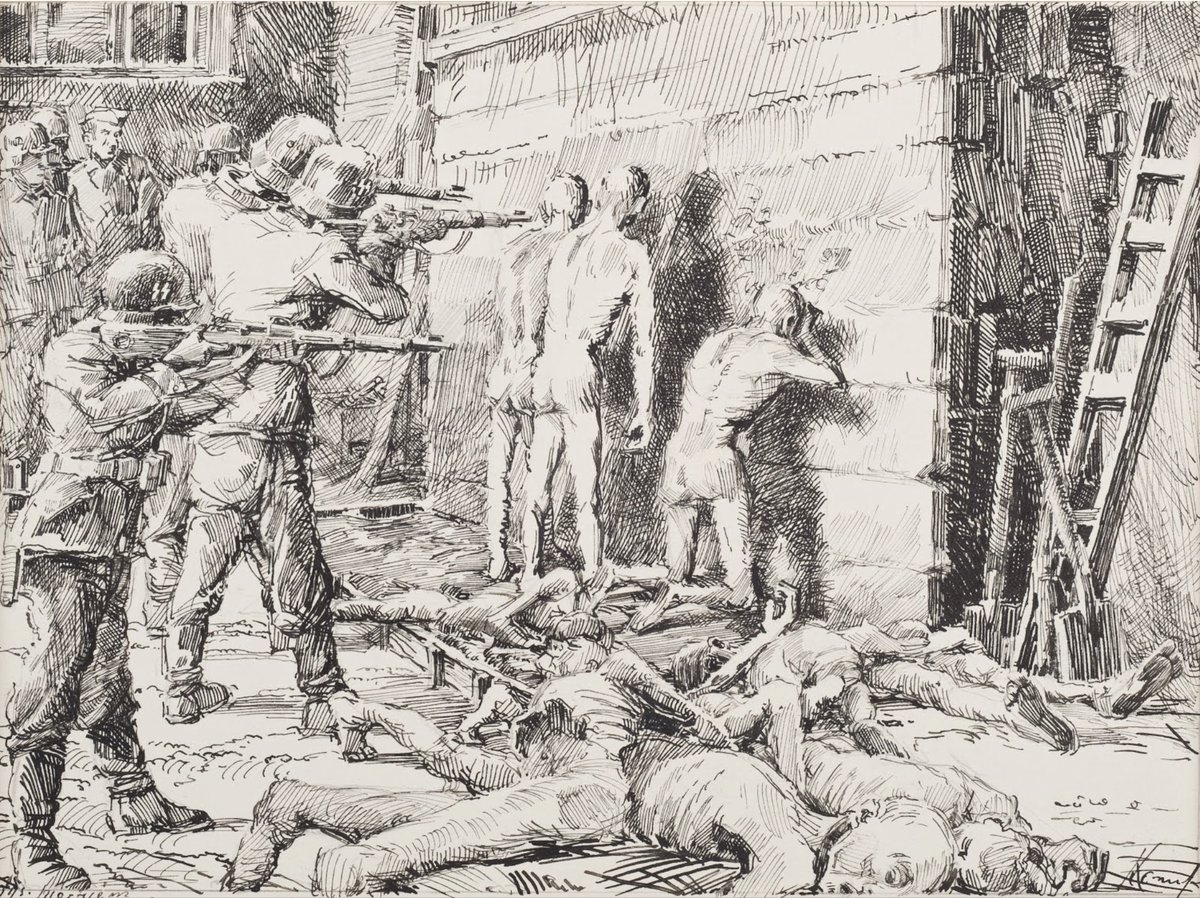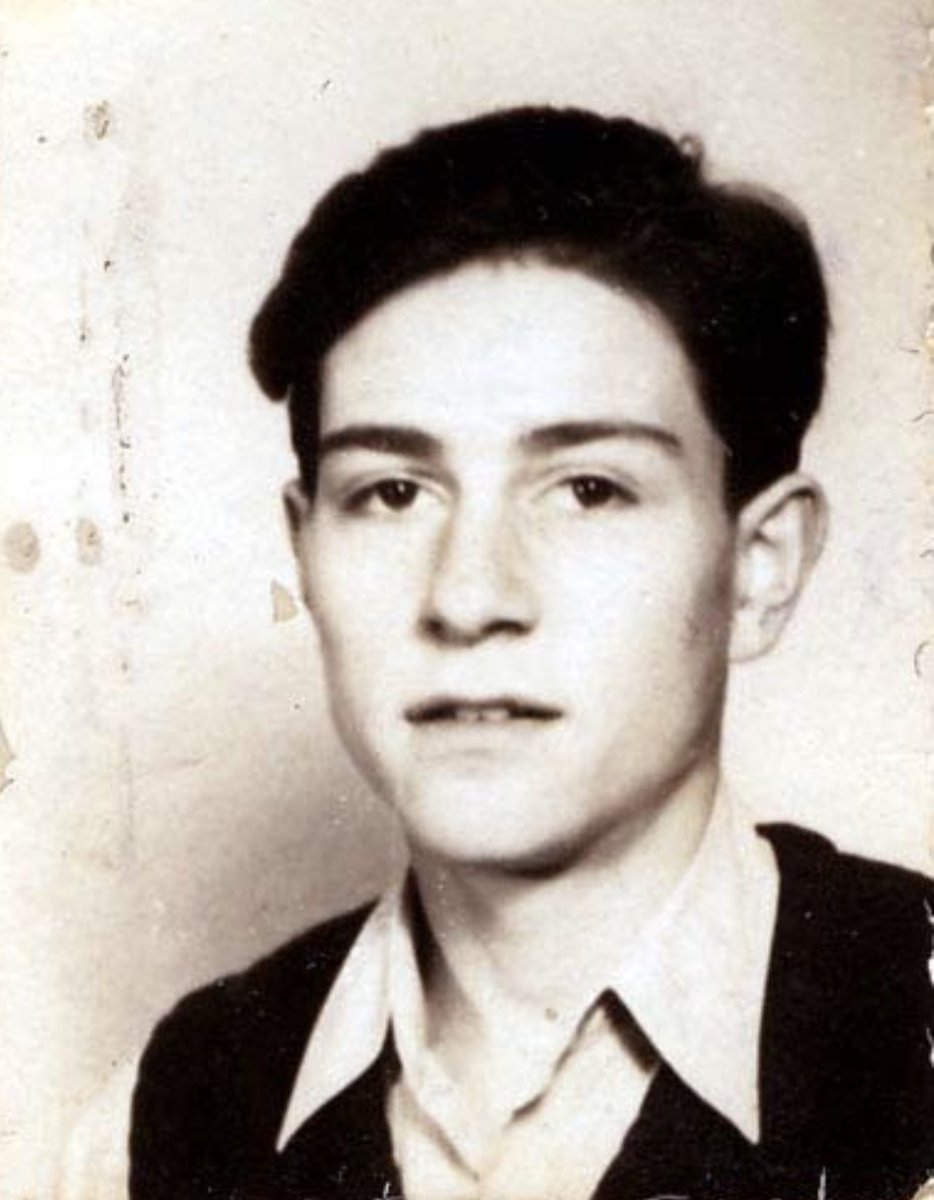
A visit to @AuschwitzMuseum is a unique personal & educational experience. Thanks to our free online lessons everyone can learn about different aspects of the history of Auschwitz.
This thread presents our online lessons: lesson.auschwitz.org
This thread presents our online lessons: lesson.auschwitz.org

"Auschwitz – concentration and extermination camp"
This is a compendium of knowledge about the history of the German Nazi camp. The lesson explains the two functions of the camp that was used to persecute different groups of people.
lekcja.auschwitz.org/en_1/
This is a compendium of knowledge about the history of the German Nazi camp. The lesson explains the two functions of the camp that was used to persecute different groups of people.
lekcja.auschwitz.org/en_1/

"Art at Auschwitz"
The lesson is dedicated to a unique document that shows the reality of functioning of Auschwitz and the fate of its victims through the works of art created by the prisoners.
lekcja.auschwitz.org/en_18_sztuka/
The lesson is dedicated to a unique document that shows the reality of functioning of Auschwitz and the fate of its victims through the works of art created by the prisoners.
lekcja.auschwitz.org/en_18_sztuka/

"Auschwitz Museum in the first years of its operation"
The lesson tells the story of the period 1945-1955, from the first works on establishing the Museum to creating its general main exhibition in 1955.
lekcja.auschwitz.org/en_22_muzeum/
The lesson tells the story of the period 1945-1955, from the first works on establishing the Museum to creating its general main exhibition in 1955.
lekcja.auschwitz.org/en_22_muzeum/

"Christian Clergy and Religious Life at Auschwitz"
The lesson presents profiles of priests and clerics, nuns, and clergy of other Christian churches incarcerated in Auschwitz.
lekcja.auschwitz.org/en_18_duchowie…
The lesson presents profiles of priests and clerics, nuns, and clergy of other Christian churches incarcerated in Auschwitz.
lekcja.auschwitz.org/en_18_duchowie…

"Deportations of Hungarian Jews to Auschwitz"
The lesson about the extermination of the Hungarian Jews in Auschwitz, but also about the history of the Jews in this country before the Second World War & during the period before the deportations.
lekcja.auschwitz.org/en_6_dep_zydow/
The lesson about the extermination of the Hungarian Jews in Auschwitz, but also about the history of the Jews in this country before the Second World War & during the period before the deportations.
lekcja.auschwitz.org/en_6_dep_zydow/

"Escapes from KL Auschwitz"
The lesson describes the geographical location of the Auschwitz camp, its security system, alarm system, repressions faced by captured escapees, the collective revolts and finally tells the stories of 25 escapes.
lekcja.auschwitz.org/en_15_ucieczki/
The lesson describes the geographical location of the Auschwitz camp, its security system, alarm system, repressions faced by captured escapees, the collective revolts and finally tells the stories of 25 escapes.
lekcja.auschwitz.org/en_15_ucieczki/

"Evacuation and liberation of KL Auschwitz"
The lesson tells about the initial stage of liquidation of the camp in late 1944, final days of the Auschwitz, liberation and medical assistance provided to liberated prisoners.
lekcja.auschwitz.org/en_11_wyzwolen…
The lesson tells about the initial stage of liquidation of the camp in late 1944, final days of the Auschwitz, liberation and medical assistance provided to liberated prisoners.
lekcja.auschwitz.org/en_11_wyzwolen…

"Expulsion of Polish and Jewish population from Oświęcim and nearby villages 1940-42"
The lesson dedicated to expulsions that the German authorities carried out between 1940-42 against the Polish and Jewish inhabitants of Oświęcim and nearby villages.
lekcja.auschwitz.org/2019_wysiedlen…
The lesson dedicated to expulsions that the German authorities carried out between 1940-42 against the Polish and Jewish inhabitants of Oświęcim and nearby villages.
lekcja.auschwitz.org/2019_wysiedlen…

"Extermination of Jews at KL Auschwitz"
The lesson analyses the situation of Jewish prisoners of the concentration camp in different periods & chronology of events that led to the transformation of Auschwitz into an extermination center.
lekcja.auschwitz.org/29_zydzi_en
The lesson analyses the situation of Jewish prisoners of the concentration camp in different periods & chronology of events that led to the transformation of Auschwitz into an extermination center.
lekcja.auschwitz.org/29_zydzi_en

"Fate of Soviet prisoners in Auschwitz"
The lesson about the fate of almost 15,000 of Soviet Prisoners of War imprisoned at Auschwitz.
lekcja.auschwitz.org/en_20_jency/
The lesson about the fate of almost 15,000 of Soviet Prisoners of War imprisoned at Auschwitz.
lekcja.auschwitz.org/en_20_jency/

"First deportations of Poles to Auschwitz"
The lesson tells the story of the first weeks of the newly created German Nazi camp and its first prisoners - Poles deported from the Cracow district in the General Government.
lekcja.auschwitz.org/en_17_deportac…
The lesson tells the story of the first weeks of the newly created German Nazi camp and its first prisoners - Poles deported from the Cracow district in the General Government.
lekcja.auschwitz.org/en_17_deportac…

"From the uprising Warsaw to Auschwitz"
The lesson tells the story of nearly 13 thousand citizens of Warsaw deported to Auschwitz through a transit camp in Pruszków after the outbreak of an armed Uprising in Warsaw.
lekcja.auschwitz.org/en_8_warszawa/
The lesson tells the story of nearly 13 thousand citizens of Warsaw deported to Auschwitz through a transit camp in Pruszków after the outbreak of an armed Uprising in Warsaw.
lekcja.auschwitz.org/en_8_warszawa/

"Jews from the Litzmannstadt Ghetto in KL Auschwitz"
The lesson has been divided into 6 main chapters, in which the history of the Litzmannstadt Ghetto up to 1944 is presented.
lekcja.auschwitz.org/2019_litz_en/
The lesson has been divided into 6 main chapters, in which the history of the Litzmannstadt Ghetto up to 1944 is presented.
lekcja.auschwitz.org/2019_litz_en/

‘Holocaust–the destruction of European Jews’
A seven-lessons free online course about the history od the #Holocaust.
All parts ⬇️
A seven-lessons free online course about the history od the #Holocaust.
All parts ⬇️
https://twitter.com/AuschwitzMuseum/status/1347177386455011329?s=20
"Persecution and deportation of the Jews in the Netherlands 1940-1945"
The lesson tells about the history of Jews in the Netherlands from the 16th century until the World War II and the Holocaust.
lekcja.auschwitz.org/32_en/
The lesson tells about the history of Jews in the Netherlands from the 16th century until the World War II and the Holocaust.
lekcja.auschwitz.org/32_en/

"Poles at Auschwitz"
Learn about the creation of Auschwitz, reasons of incarceration of Poles as well as the plans of development of Auschwitz into the main camp for prisoners in occupied Poland.
lekcja.auschwitz.org/en_2020_06_pol…
Learn about the creation of Auschwitz, reasons of incarceration of Poles as well as the plans of development of Auschwitz into the main camp for prisoners in occupied Poland.
lekcja.auschwitz.org/en_2020_06_pol…

"Preparation to the visit at the Auschwitz Memorial for youth"
The lesson presents basic information about the Nazi ideology, describes the history of Auschwitz and the development of extermination of Jews and Roma.
lekcja.auschwitz.org/31_przygotowan…
The lesson presents basic information about the Nazi ideology, describes the history of Auschwitz and the development of extermination of Jews and Roma.
lekcja.auschwitz.org/31_przygotowan…

"Preparation for a visit to the Auschwitz Memorial"
The main task of this lesson is to prepare for a visit to the @AuschwitzMuseum.
lekcja.auschwitz.org/en_12_miejsce_…
The main task of this lesson is to prepare for a visit to the @AuschwitzMuseum.
lekcja.auschwitz.org/en_12_miejsce_…

"Resistance Movement in KL Auschwitz"
The lesson summarizes the organization of secret resistance activity that took place at Auschwitz from the very beginning of its operation, including informing the world about the crimes perpetrated in the camp.
lekcja.auschwitz.org/en_16_ruch_opo…
The lesson summarizes the organization of secret resistance activity that took place at Auschwitz from the very beginning of its operation, including informing the world about the crimes perpetrated in the camp.
lekcja.auschwitz.org/en_16_ruch_opo…

"Roma in Auschwitz"
The main topic of the lesson is the history of deportations and the subsequent extermination of Roma and Sinti people in the Auschwitz camp.
lekcja.auschwitz.org/en_roma_auschw…
The main topic of the lesson is the history of deportations and the subsequent extermination of Roma and Sinti people in the Auschwitz camp.
lekcja.auschwitz.org/en_roma_auschw…

"Sonderkommando"
The central theme of the lesson is the history of a special working group, composed mainly of Jewish prisoners, who were forced by the Germans to operate gas chambers, burning pits and crematoria.
lekcja.auschwitz.org/en_10_sonder/
The central theme of the lesson is the history of a special working group, composed mainly of Jewish prisoners, who were forced by the Germans to operate gas chambers, burning pits and crematoria.
lekcja.auschwitz.org/en_10_sonder/

• • •
Missing some Tweet in this thread? You can try to
force a refresh
















